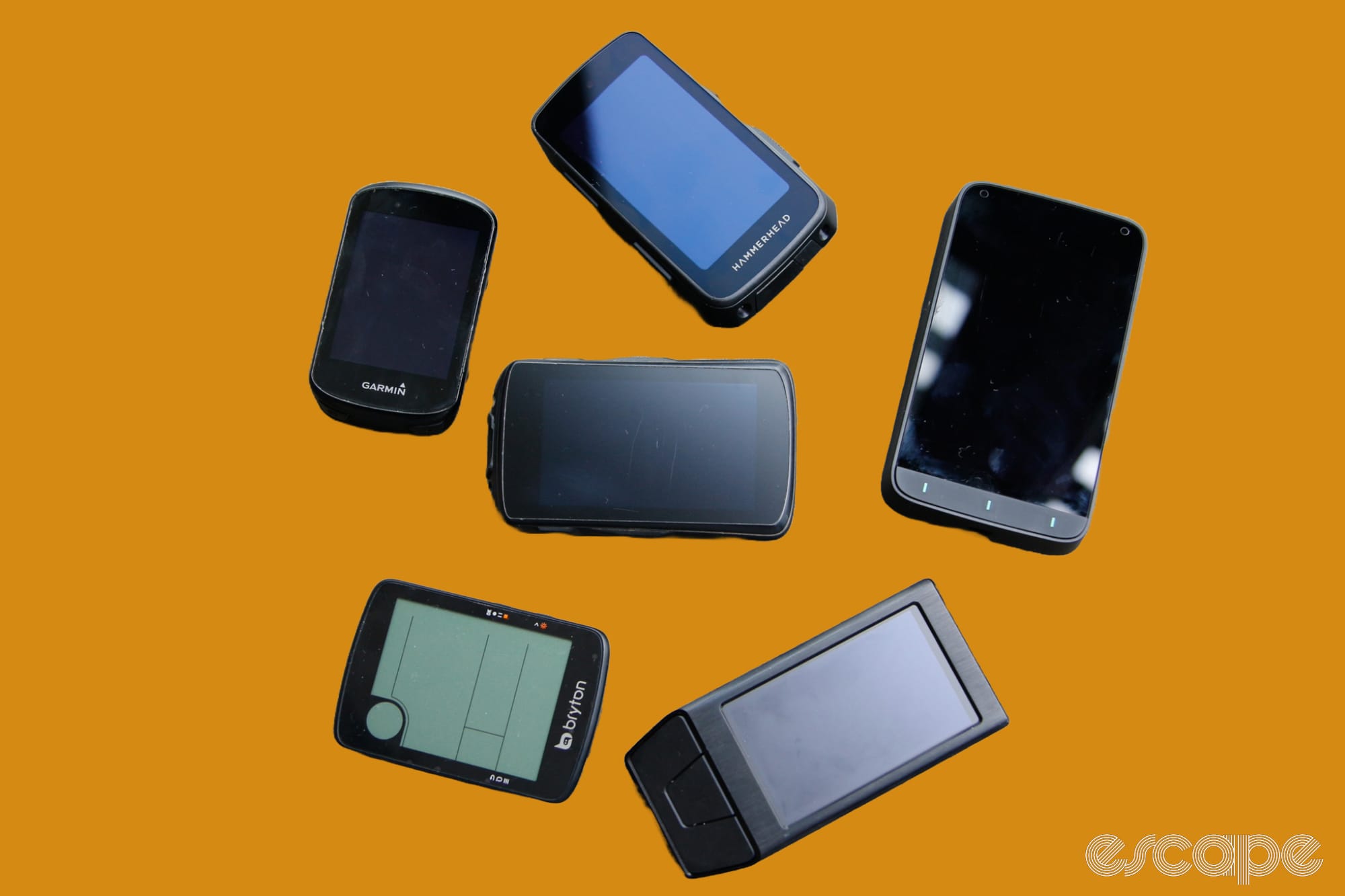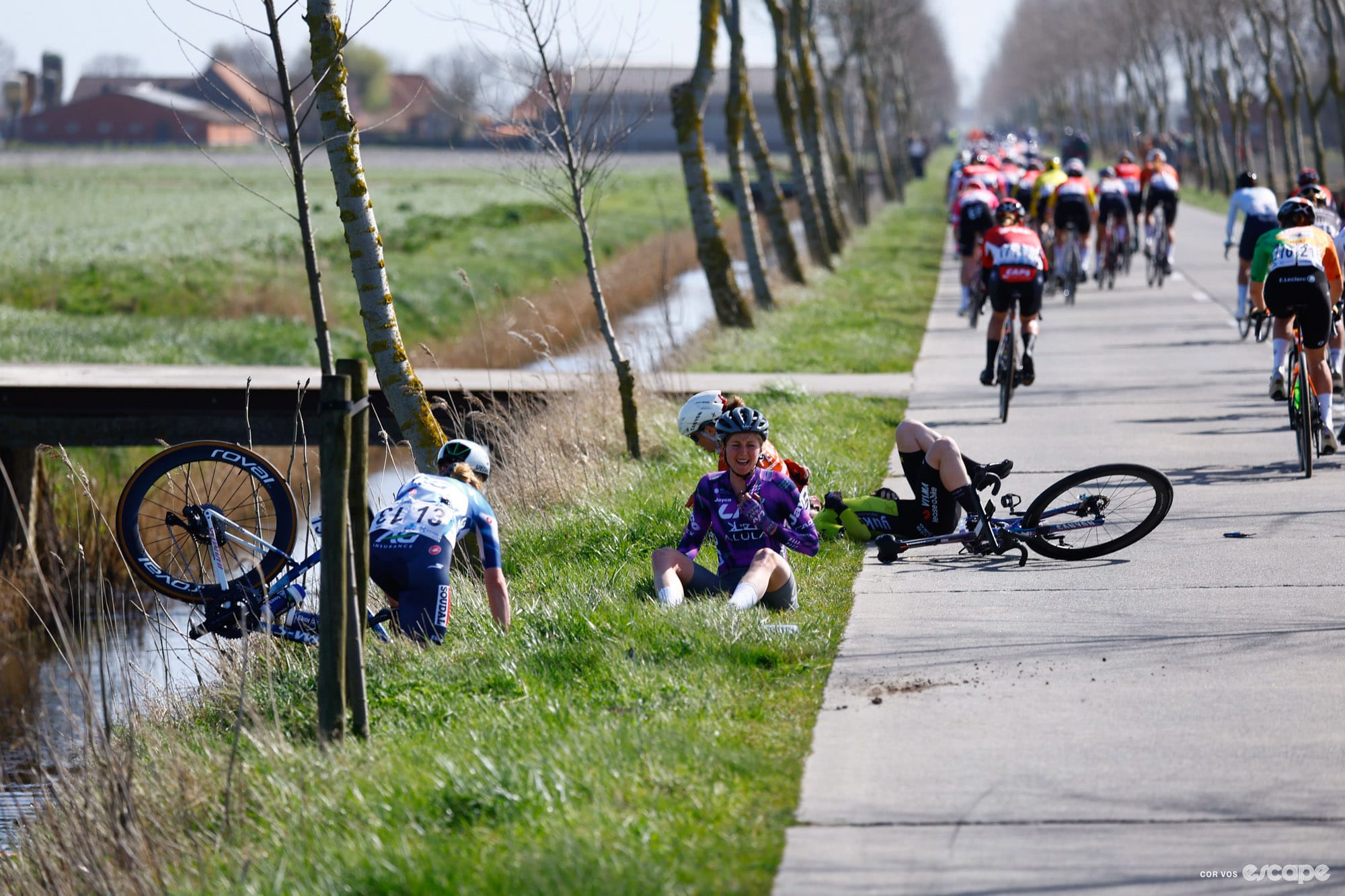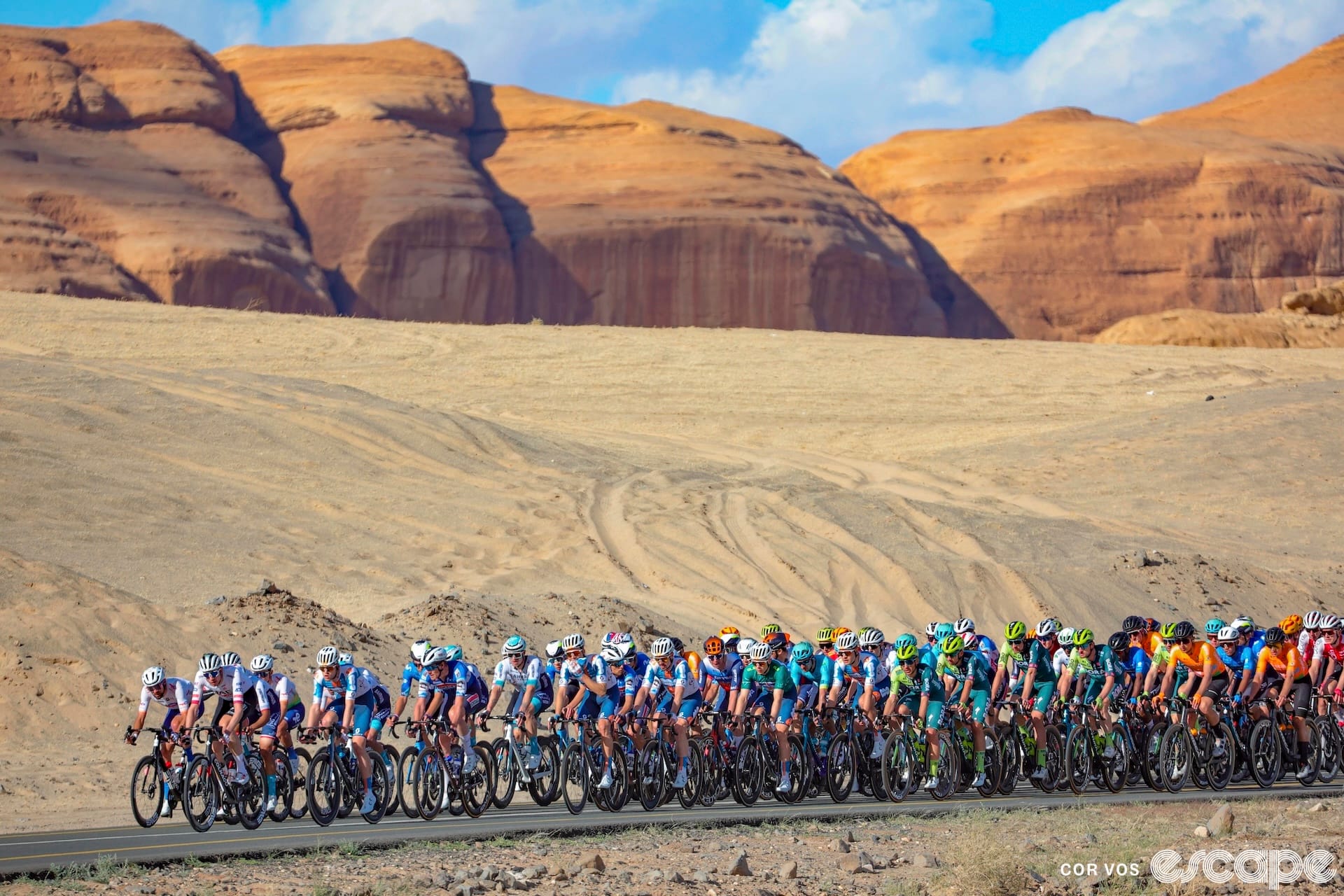Continuing our Collective Favourites series, this time we’re tackling a category that sparks, once again, endless debates: cycling computers. A good cycling computer is more than just a way to track your rides – it can be your training partner, navigation tool, or a device that helps you complete the challenge of riding every street in your city.
But, like bib shorts and cycling shoes, the perfect cycling computer is a highly subjective genre. Admittedly, choosing our favourites in this category proved harder than anticipated for the tech team members – and Ronan, well, he refused to pick one altogether.
The challenge with cycling computers – similar to any electronics – is that they have oh-so-many features, in an attempt to cater to everyone. But the reality is that some prefer a simple, no-nonsense device that records rides without distraction and has a battery that lasts more than a few hours. Others demand all of the features; advanced mapping, power metrics, and deep integration with training platforms. And then there are those who simply want the biggest, brightest screen possible. Building all this with a functioning interface and dependable syncing is no mean feat.
What to look for in a cycling computer
Before we get into our picks, there are some key factors to consider when choosing a cycling computer. First, you might wonder if you even need one. If you only need routing help on your relatively short rides, then your smartphone with a secure mount might be enough. But beyond that just routing, cycling computers bring a few big advantages.
They offer better battery life, handle weather conditions more robustly, and are designed to be readable in bright sunlight. Plus, they integrate seamlessly (at least on paper) with bike sensors and are far less fragile and precious than a phone mounted to your handlebars. Modern cycling computers are, however, increasingly bridging the gap to becoming sort of smartphones themselves. Some now work with absolutely not cycling-related apps such as Instagram or Spotify, and show your oncoming messages and calls on the screen. And when it comes to cost, the high-end computers are also getting ever more expensive.
While the market offers numerous head unit options from a number of brands, two names dominate the head unit market: Garmin and Wahoo. Each year, ambitious newcomers enter the scene – some succeed, while others fade away.
If you appreciate specific features or, for example, repairability or local production, then looking at those underdog options is worthwhile.
GPS accuracy & routing
Whether you race, commute, or love exploring, GPS accuracy and routing are crucial features in any modern cycling computer. Some head units feature multi-band GPS for superior precision, while others rely on a single radio signal frequency, which may struggle in dense forests or urban areas. Data accuracy also applies to elevation; some computers are better than others at figuring out how many meters (or feet) of elevation you've gained. This is down to both the GPS accuracy and the algorithms the device uses to sort out bad data points.
If you frequently ride unfamiliar routes, turn-by-turn navigation and offline maps are real game-changers. Most modern cycling computers offer at least basic route functionality, but the higher-end options also include better re-routing functions for getting you back on track after a wrong turn.
If you mainly use the computer for tracking training data such as power, heart rate and speed, then the routing abilities might not be a priority.
Battery life
Are you the type of rider who charges everything before every ride, or scrambles to get ready five minutes before the agreed start time and, as a result, gets home with dead devices? The battery lives of cycling computers vary vastly, with some models barely making it through a few hours-long training ride and others – like the Coros Dura – claiming to last 40+ hours on a single charge.
There are also a lot of solar-charging computers available now and those can basically keep going for as long as your legs with a single charge, provided there's bright enough ambient light.
While manufacturers are good at giving a ballpark battery life for the device, in real-life conditions it can vary based on a lot of factors: how many sensors (such as power and heart rate monitor, rear radar, and phone) are connected to it, the functions the device is performing (following a route or free riding), the temperature, and any battery-saving functions like audible or visual alerts you might have turned on or off.
As batteries age, they also naturally lose their capacity and unfortunately, unless you want to perform the operation yourself the only fix is a new head unit – many major manufacturers don't offer battery replacements for cycling computers. Again, smaller players such as Absolute One are an outlier on this front with repairability.
Connectivity and features
"If it's not on Strava it didn't happen" might not apply to everyone, but what's the fun of having your computer record lots of data if you cannot sync it anywhere else for further analysis? From syncing with training platforms to integrating with power meters, smart trainers, and rear radars, connectivity is a major feature – and challenge – for many cycling computers.
Some head units also support structured workouts, real-time tracking, or even changing your Spotify tunes on the screen, all the while they sync in real time with your phone notifications.
When it comes to features – perhaps similarly to smartphones – cycling computers often offer more features than you might need, while at the same time lacking some you wish they had. So again, worth paying attention to the feature set and considering whether the device meets your needs. For example, Garmin’s computers can show you marine weather warnings (fully unnecessary for cyclists), but at the same time, not all of the models are able to show you upcoming climbs on your route (the ClimbPro feature) unless you're following a pre-set course.
Another aspect to consider when it comes to features is that some computers – such as Garmin and lately Hammerhead – also support a wider range of third-party apps and widgets that you might want to install on your computer. With others, including Wahoo, the ecosystem is a lot more closed.
Size and usability
Once you've nailed what you want in terms of the functionality of the cycling computer, the last piece of the puzzle is the size. When it comes to screen size, the trend in recent years has been towards bigger and brighter screens. While they are easier to read, they also add weight, bulk and battery usage. Some computers – such as the new Wahoo Elemnt Ace and Garmin Edge 1050 – are actually so large that they are a struggle to fit on standard out-front computer mounts.
When it comes to the screen itself, more often than not touchscreens are the manufacturers’ choice, but can have button interfaces too. Computers with only button controls (ie. no touchscreen) exist as well. While a touchscreen can be intuitive to use, many of them struggle in the rain and can be trickier to use with thick winter gloves. Similarly, you can often find a button on a computer to pause the ride but clicking on the specific spot on the screen might take a couple of seconds more concentration and distract you from the road.
With those basics covered, here are our team’s and member’s favourite cycling computers.
Josh Weinberg – Hammerhead Karoo
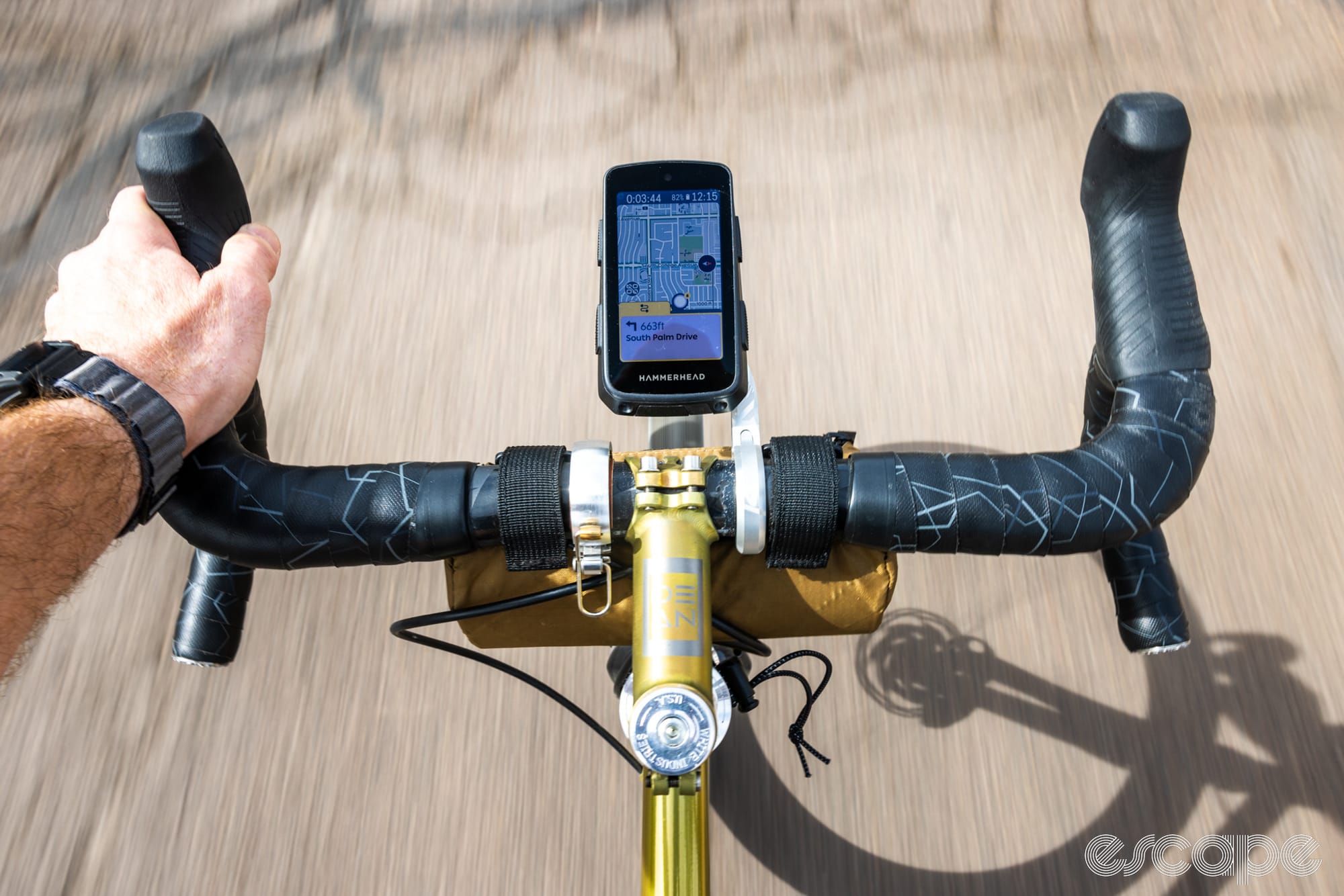
My experience with cycling computers outside of Hammerhead is fairly limited. I was an early adopter of the Karoo 2 when it came out back in 2022 and, before that, relied on a Wahoo Element for on-bike computing. For about the past year I’ve been using the updated Hammerhead unit, somewhat confusingly named simply “Karoo.”
Initially, I was attracted to the large screen of the Karoo 2 instead of the much smaller one featured on the Element I had been using. With 3.5” of bright and colorful real estate (measured diagonally) the Karoo’s screen is incredibly easy to read, even in varied lighting conditions. It can also be used as a touchscreen, or not if that isn’t your jam, and features robust and intuitive UX that’s much easier to use than much of the competition.
SRAM, which has owned Hammerhead since 2022, released the most recent version along with RED AXS in 2024 as an integrated “single-point union to experience and control everything from your bike’s connected components.” So, while the newer Karoo has enhanced button functions (including a separate power button), much longer battery life, wireless phone syncing, and a USB-C charging port, it also acts as a control center for my AXS-equipped bikes. ANT+ accessories are supported as well. I’ve come to greatly appreciate the integration between the head unit and Garmin Varia, as its radar functionality display on the Karoo’s screen alerts me of approaching autos in real time.
To be sure the Karoo isn’t perfect (it doesn’t offer passive solar charging), and it ain’t cheap, but that just leaves gaps for SRAM to fill with the next generation of Hammerhead computers.
Price: US$475 / £450 / AU$750 at hammerhead.io
Dave Rome – Wahoo Elemnt Bolt V2
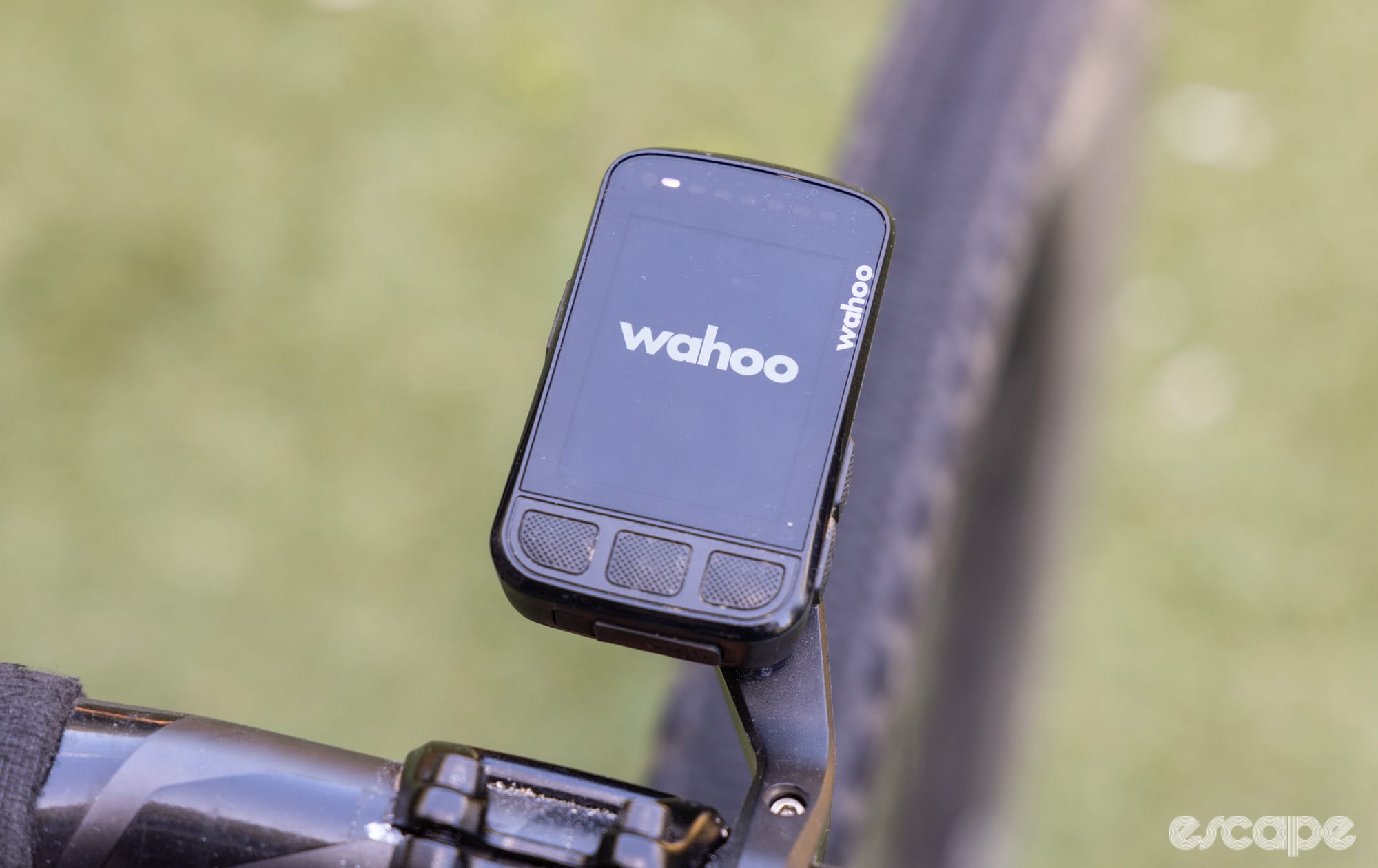
Despite being a lifelong gear nerd and career tech editor, I’m not a super user of bike computers.
Years ago, when I actually trained, I wouldn’t ride a single kilometre without counting it. Years later, the burnout was real, and my joy for riding was rediscovered by leaving the computer at home, ignoring Strava, and merely focusing on the journey. Or put simply: following my nose and the clock, not how I compare to others.
It’s only in recent years that I began to once again enjoy riding with power and numbers (plus, some elements of the job require it). However, my desire is to keep things simple, where I focus on the ride rather than the data or directions, and for that, I prefer computers that remain simple to use, require little thought, and steal little attention.
It’s for these reasons that I keep returning to the Wahoo Bolt V2 as my go-to computer - whether it’s for road, gravel or MTB (although I typically still go sans-computer on the MTB). The likes of the larger Roam, new Hammerhead Karoo, or Garmin’s latest gizmos have compelling features, but the more they do and the bigger the screen, the more I find myself being distracted away from the activity that matters.
If I need maps and directions, then I’ll reach for the Hammerhead Karoo – that computer has a wonderful user interface. Otherwise, it’s the smaller and simpler Wahoo Bolt V2 for me, and all I need to do is ensure it’s charged.
Price: US$280 / £250 / AU$400 at wahoofitness.com
Suvi Loponen – Garmin Edge 530
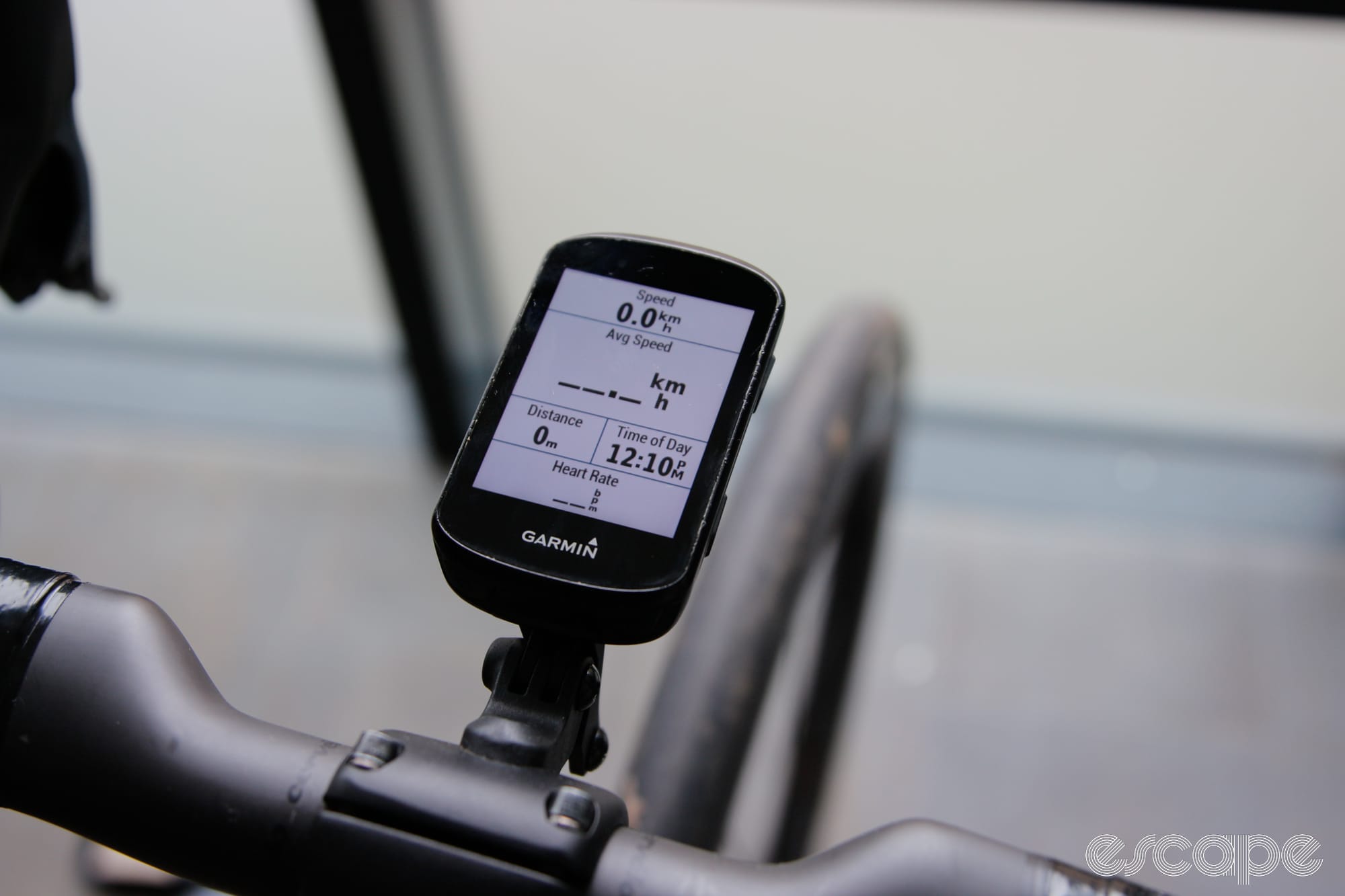
Like Dave, I appreciate a simple and – most of all – reliable and long-serving computer. Much like with smartphones, I also prefer a relatively compact size – just big enough to clearly display my route without requiring me to squint.
The Garmin Edge 530 ticks all of those boxes. It has excellent battery life for all-day rides, a button-based interface that works reliably in the rain, and it does exactly what I need – displaying key stats and navigation without unnecessary distractions.
Mine is about five years old now, and I can count the times it has let me down on one hand. One of those was when I realised I had maxed out its memory, preventing new routes from syncing from Strava. The others were occasional syncing glitches.
Despite marketing campaigns tempting me with newer models, I’ve never really felt the need to replace my 530. Not even when I shattered its screen by dropping it onto a tiled floor – with the help of a replacement kit from eBay and a YouTube video, I managed to get my fave back up and running again. The closest I came to replacement was with the Garmin Edge 840, essentially a touchscreen version of my 530.
I now ride regularly with other computers too and of those, I can give credit to Hammerhead for its sleek design and user interface. But personally, I prioritise battery life over UI design and the Karoo 2 didn’t quite meet my needs on that front. I also haven’t spent enough time with the Karoo 3 to determine if it’s any better.
Price: US$300 / £220 / AU$500 at garmin.com
Jase de Puit – Wahoo Elemnt Roam V2
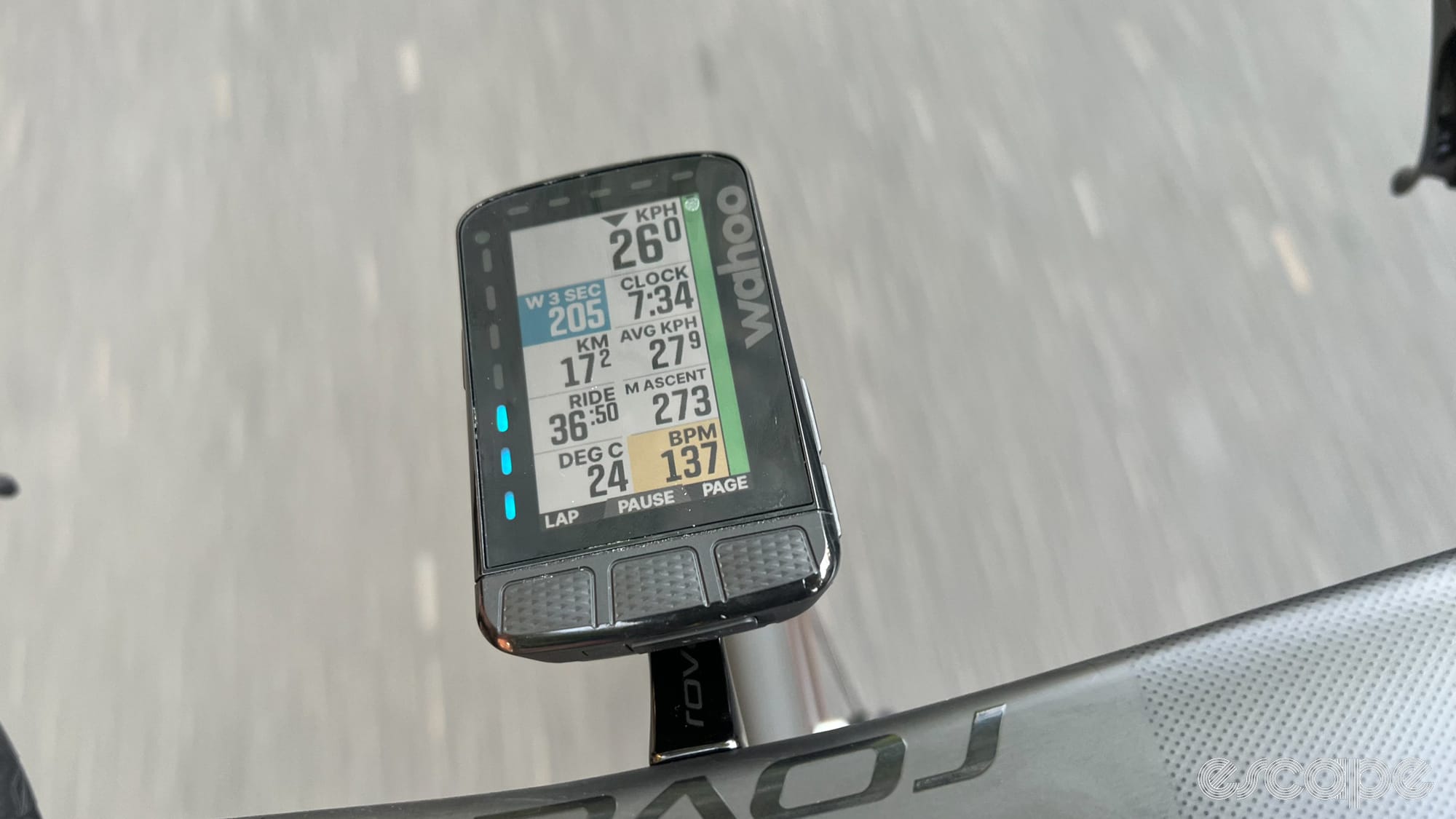
My favourite bike computer is the Wahoo Elemnt Roam V2. I've been using a Bolt V1 since 2018 and was really keen to see what Wahoo had been working on in 2024. The release of the Ace really inspired me.... to buy a second-hand Roam.
The benefits of Wahoo's approach to bike computers are well-understood at this point. They're simple to use. The feature set is probably just a bit broader than most people are after. The heavy-lifting for complicated tasks is completed in the Wahoo app.
My use-cases are pretty basic. I want to see typical ride stats while I'm on the bike. I want to easily load and follow routes when I'm riding in unfamiliar areas and I want all my rides to head to Strava when I'm done. The Roam does all these things well.
As a recent Roamer I'm appreciating the coloured data screens, great battery life and the fact that basic Strava routes still have turn-by-turn directions (only specific file types had this on my Bolt V1). The bigger screen size works great with a Varia (or other radar) too.
In terms of gripes, I can't figure out a way to make the whole device silent. I like the Summit Climbing feature but can't seem to enable it without the device beeping at me every time I start a climb. A common complaint is the lack of touch-screen to pan around maps but personally I'm fine to use my phone if/when I get lost.
Price: US$400 / £350 / AU$600 at wahoofitness.com
Ronan McLaughlin – None
I'm not doing a favourite head unit. I won't even pick the best of a bad bunch – because they're all terrible, just in different ways.
As I type this, I've just spent 20 minutes watching a Garmin 1040 repeatedly attempt (and fail) to connect to Garmin Express, which is simultaneously crashing. I just want to update it and load maps for an event this weekend. So I try the Garmin Connect app… and, for no apparent reason, it has switched to Mandarin. Brilliant.
Did we do a good job with this story?

